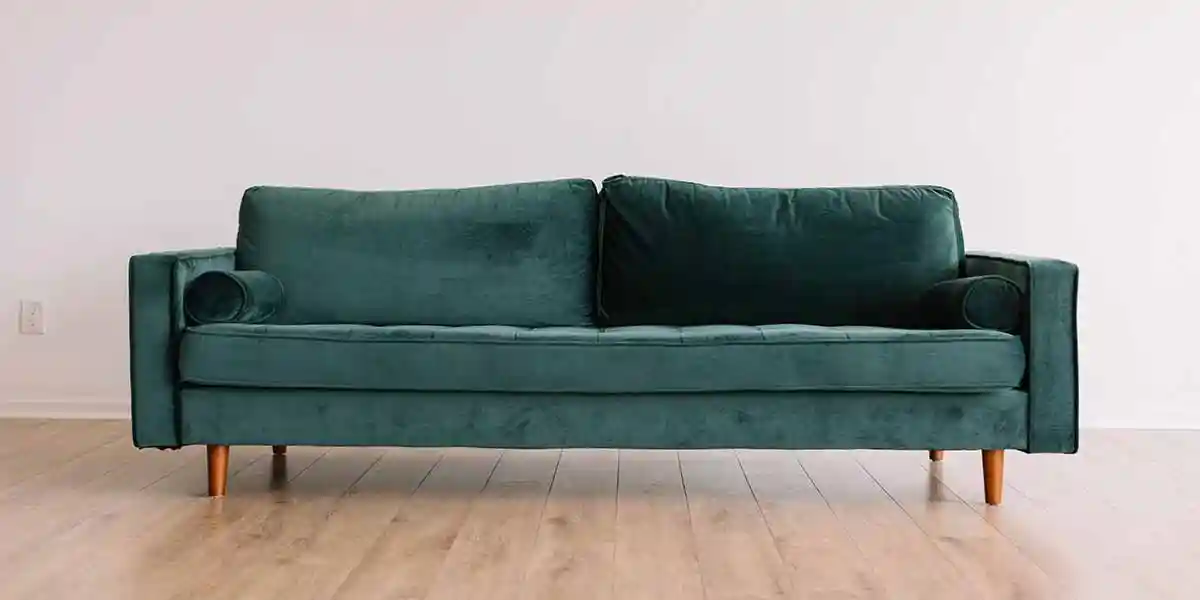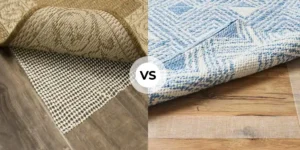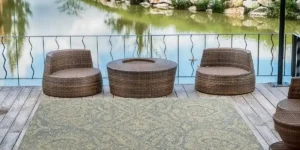Ever worried about the thought of your vinyl floors getting scratched or dented by your trusty couch or dining chair?
You’re not alone! We’ve all been there, wondering how to keep our floors looking sharp while still enjoying the comfort of our favorite furniture.
In this article, we’re tackling that very issue.
No fancy jargon or complex solutions.
Just practical tips and tricks to help you protect your vinyl floors from the wear and tear of heavy furniture.
From those annoying chair leg scuffs to the potential damage caused by weighty sofas, we’ve got you covered.
Before going further into detail, let’s understand;
How Heavy Furniture Damages Vinyl Plank Flooring?
Vinyl plank flooring is a popular choice for its durability and resilience.
But, heavy furniture can pose a threat to its pristine appearance over time.
- Indentations: The weight of heavy furniture, such as sofas, tables, or cabinets, can lead to permanent indentations on vinyl plank floors.
- Scratches and Scuffs: Even if the furniture itself doesn’t have sharp edges, frequent movement or sliding of heavy items can result in scratches and scuffs on the surface of vinyl plank flooring.
- Compression Damage: Continuous pressure from heavy furniture can cause the vinyl planks to compress, leading to long-term damage.
- Tearing or Peeling: In some cases, the weight of heavy furniture can cause the edges or seams of vinyl planks to lift or peel.
Might Like: How to Fix Gaps in Vinyl Plank Flooring? (5 Easy Steps)
How Much Weight Can Vinyl Plank Flooring Hold?
Vinyl flooring is pretty sturdy, but it does have its limits when it comes to handling weight.
Generally, it can support the weight of typical household furniture. Your sofas, dining tables, and the like—without any major issues.
Also, vinyl flooring can handle the weight of a piano or 500 pounds without getting damaged.
Yet, it depends on its quality, plank thickness, and the object’s weight distribution.
For example, light-duty planks can withstand up to 25 pounds per square foot.
While medium-duty can withstand up to 75 pounds per square foot.
Heavy-duty can withstand between 100 and 125 pounds per square foot.
It is worth noting that heavy furniture does not harm vinyl plank flooring.
Instead, it is the legs of your furniture that are causing the damage.
Because it provides support making weight distribution focus on a single point.
As a consequence, lots of pressure will be induced where the legs are causing physical distress or tension at the point.
Thus, the damage worsens when you drag furniture over or across the floor.
Best Ways to Protect Vinyl Flooring From Heavy Furniture
1. Use Protective Pads or Coasters
Coasters are like superheroes for your floors.
Pop them under the legs of your heavy furniture, and they’ll help distribute the weight more evenly.
This simple move can work wonders for preventing dents and marks.
Plus, these pads keep vinyl flooring stable for a long time.
On top of that, they are incredibly affordable and easy to use.
Markets are filled with different types of furniture protection pads.
Thus, before you purchase any, it is worth it to opt for one that is ideal for vinyl plank flooring.
And it can support the weight of your furniture.
Moreover, it will also lessen the impact of weight pressure on the planks, thereby preventing wear and tear and indentation.
Must See: 7 Best Furniture Pads for Floors (Buying Guide Included)
Note: We strongly tell you not to use pads made of rubber because they leave stains behind on the surface of the vinyl.
2. Lift, Don’t Drag
Dragging furniture across the floor to the other point may seem the easiest way of avoiding lower back pain rather than carrying it.
Avoiding back pain is good and healthy.
But dragging a piece of furniture on the floor is not worth it because it scratches, tears apart the planks, and leaves dents behind.
Instead of dragging it, request a helping hand to help you lift it to the other point to avoid tearing the vinyl planks.
If there is no one to offer you support.
You can take a rug, carpet, sheets, or plywood boards underneath the base or furniture legs as a protective layer to move it across the floor.
Providing a protective layer helps to spread out the furniture’s weight.
And minimizes the contact between the furniture edges and the planks.
3. Choose Furniture with Wide Legs
If you’re on the hunt for new furniture, consider pieces with wider legs.
They distribute the weight better, reducing the risk of indentations on your vinyl flooring.
Additionally, wide legs offer better stability, reducing the chance of the furniture tipping over.
They also provide more surface area for upholstery, making them more comfortable to sit on.
4. Don’t Use Rolling Chairs
Chairs and desks with castors can also damage your vinyl flooring over time.
Since the castors exert a lot of pressure on the floor, layering results in dents and scratches.
The constant movement of the castor wheels will eventually cut into your flooring and tear the vinyl.
You can stop using them, and if necessary, place either a rug or a PVC mat underneath the seating area to cut castor contact with the floor.
5. Place Area Rugs
Placing area rugs or mats under heavy furniture can act as a buffer.
They not only add a touch of style but also provide an extra layer of protection against scratches and scuffs.
Additionally, area rugs and mats can help to absorb the sound and vibrations of footfalls, which can help reduce noise in the room.
They can also help to keep the floors cleaner by trapping dirt and dust.
See Also: How to Choose An Area Rug?
How To Fix Furniture Dents on Vinyl Flooring?
Read This: 7 Best Ways to Fix Peeling Floor (Must-Try!)
Read More on Vinyl Flooring
- Robot Vacuum for Vinyl Plank Floors: 5 Best Models (Pros & Cons)
- 5 Best Ways to Remove Burn Marks From Vinyl Floors (Must-Try!)
- How to Fix Vinyl Flooring Seams? (A Step By Step Approach)
- 5 Reasons Why Your Vinyl Plank Floor Buckling (Guide To Fix It)
- How to Fix Gaps in Vinyl Plank Flooring? (5 Easy Steps)





